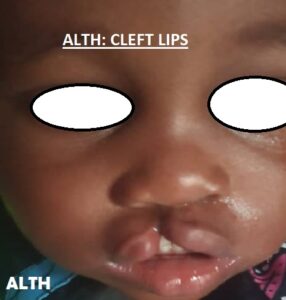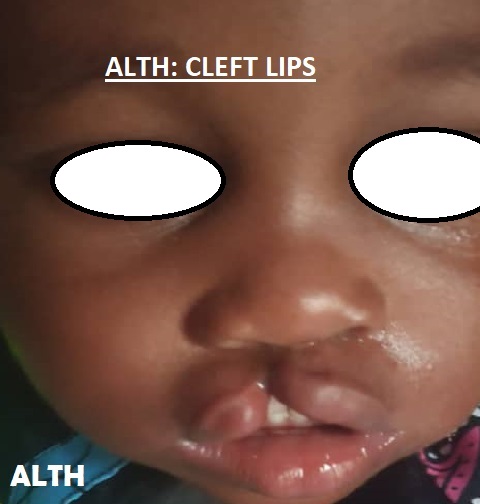What is Cleft lip? Cleft lip is the openings or splits in the upper lip at the roof of the mouth. Cleft lip which often accompany with cleft palate result when facial structures that are developing in an unborn baby fails to close completely. Expected to note are the basic healthy guidelines to know about cleft lips.
These are most common birth defects in children (cleft lip and cleft palate). They most commonly occur as isolated birth defects but are also associated with many inherited genetic conditions or syndromes.
Symptoms of Cleft lips during pregnancy
Cleft lips are hardly recognizable at pregnancy until delivery. However, there are few signs that can be used in concluding whether the baby will clefted in the lips, they are:
- A split in the lip and roof of the mouth (palate) that affects one or both sides of the face
- A split in the lip that appears as only a small notch in the lip or extends from the lip through the upper gum and palate into the bottom of the nose
- A split in the roof of the mouth that doesn’t affect the appearance of the face
Less commonly, a cleft occurs only in the muscles of the soft palate (submucous cleft palate), which are at the back of the mouth and covered by the mouth’s lining. This type of cleft often goes unnoticed at birth and may not be diagnosed until later when signs develop.

Signs and symptoms of submucous cleft palate may include:
- Difficulty with feedings
- Difficulty swallowing, with potential for liquids or foods to come out the nose
- Nasal speaking voice
- Chronic ear infections
Causes of Cleft Lip (or cleft palate)
Since it is fetal disorder, this make is somehow obscure to empirically tell on the main causes, meanwhile, the causes have been traced to these:
- Genetic cause
- Environmental factors
Genetic cause: Some families have a history of clefting. There may be a grandparent, parent, cousin, brother or sister, or another relative who has had a cleft palate. This may be passed on from generation to generation.
Environmental Factors: Most cleft palates seem to be caused by environmental factors that increase a mother’s risk of giving birth to a child with a cleft palate.
These environmental factors include:
- Exposure to German measles (Rubella) or other infections
- Certain medications
- Excessive Alcoholic drinking and unprescribed use of drugs usage
- Smoking of Cigarette
- Certain vitamin deficiencies, especially during early pregnancy (trimester)
Since the baby’s face develops so early in the pregnancy, even when these factors are minimized through proper prenatal care, the damage may have already occurred to the child before the mother was even aware that she was pregnant.
Possible complications of cleft lip
Children with cleft lip with or without cleft palate face a variety of challenges, depending on the type and severity of the cleft.
Difficulty feeding: One of the most immediate concerns after birth is feeding. While most babies with cleft lip can breast-feed, a cleft palate may make sucking difficult.
Ear infections and hearing loss: Babies with cleft palate are especially at risk of developing middle ear fluid and hearing loss.
Dental problems: If the cleft extends through the upper gum, tooth development may be affected.
Speech difficulties: Because the palate is used in forming sounds, the development of normal speech can be affected by a cleft palate. Speech may sound too nasal.
Peer influence and socio-health trauma: Children with clefts may face social, emotional and behavioral problems due to differences in appearance and the stress of intensive medical care.

Can I prevent my baby from having cleft lip (or cleft palate)?
Yes, you can since it is congenital abnormality, consider the following below in view of reducing the chance of cleft lips.
- Avoid drinking or smoking during pregnancy
- Good prenatal care is one of the best ways to increase the chances of giving birth to a healthy baby.
- Consider genetic counseling (we are available at our hospital)
- Public education about possible environmental factors
- Increased access to prenatal care for mothers or take prenatal vitamins
- Efforts to decrease teen pregnancies
Women older than 35 must be counseled regarding the maternal age risk factors because, older women are more likely to give birth to a child with a birth defect. Also, families with a history of cleft lip (palate) should seek genetic counseling to determine their relative risks for giving birth to a child with a cleft palate.


Recent Comments